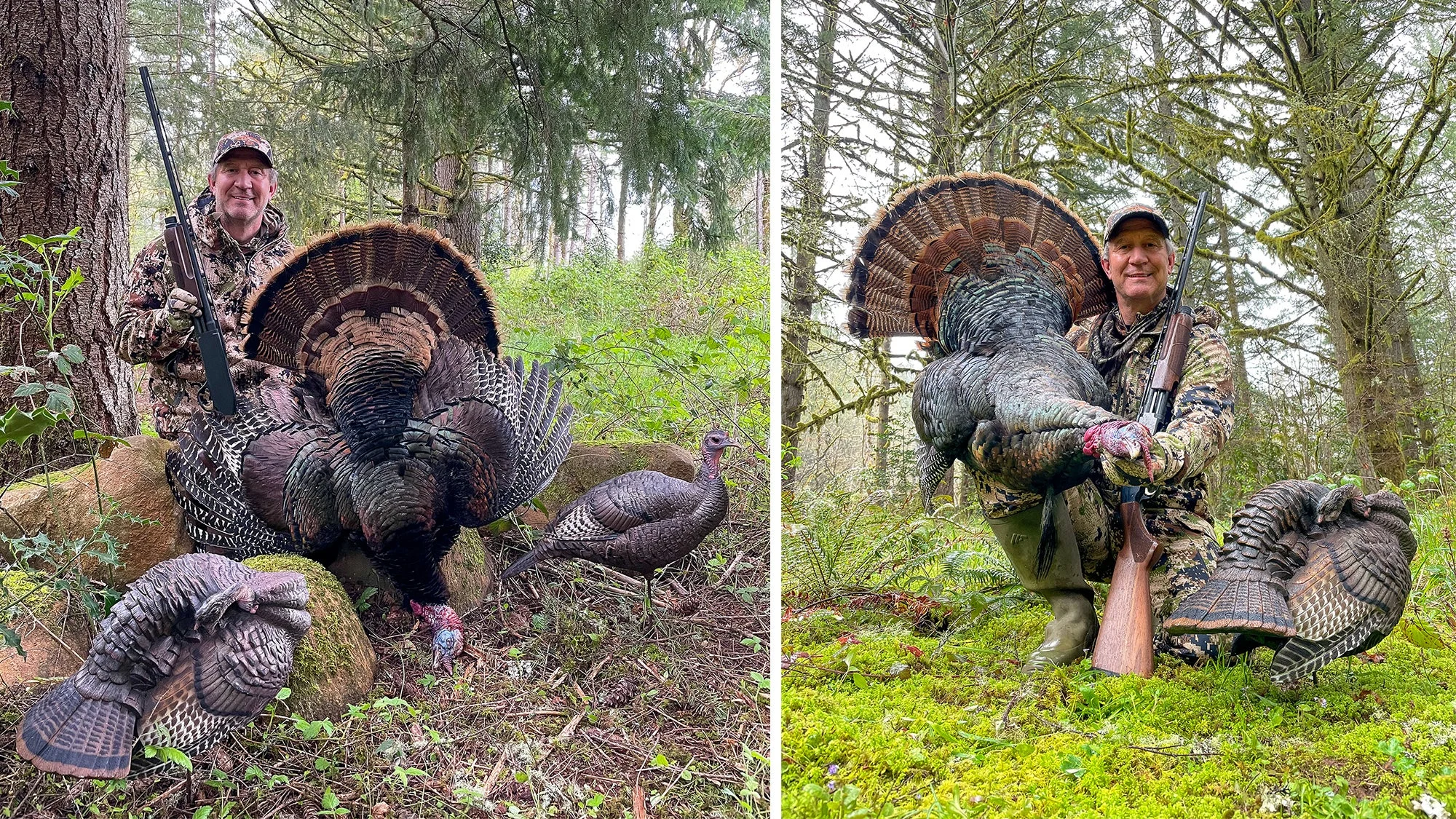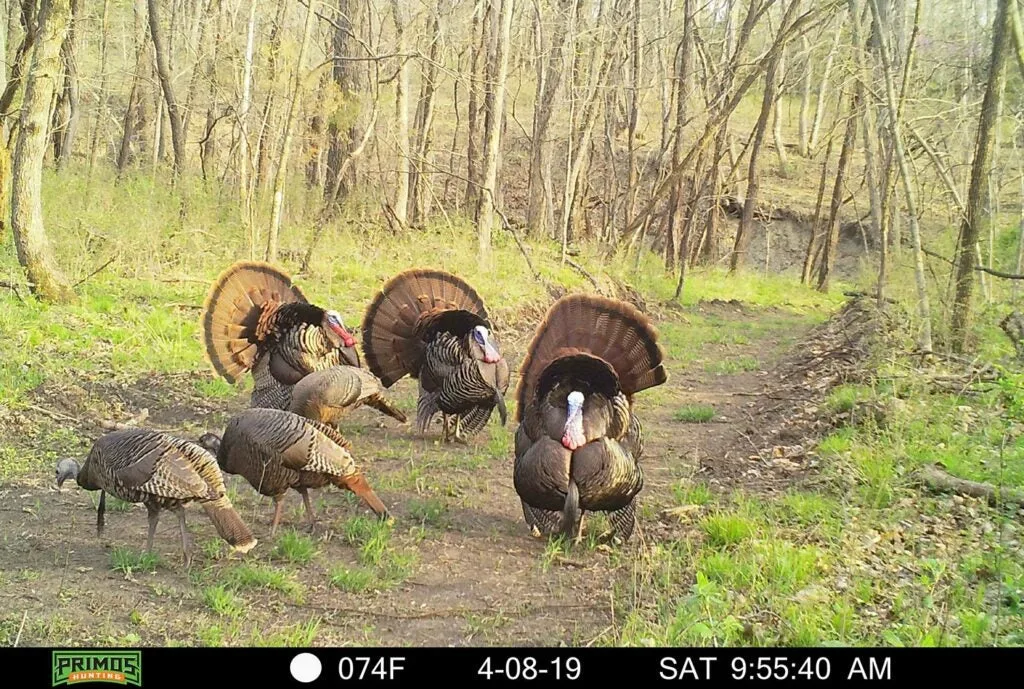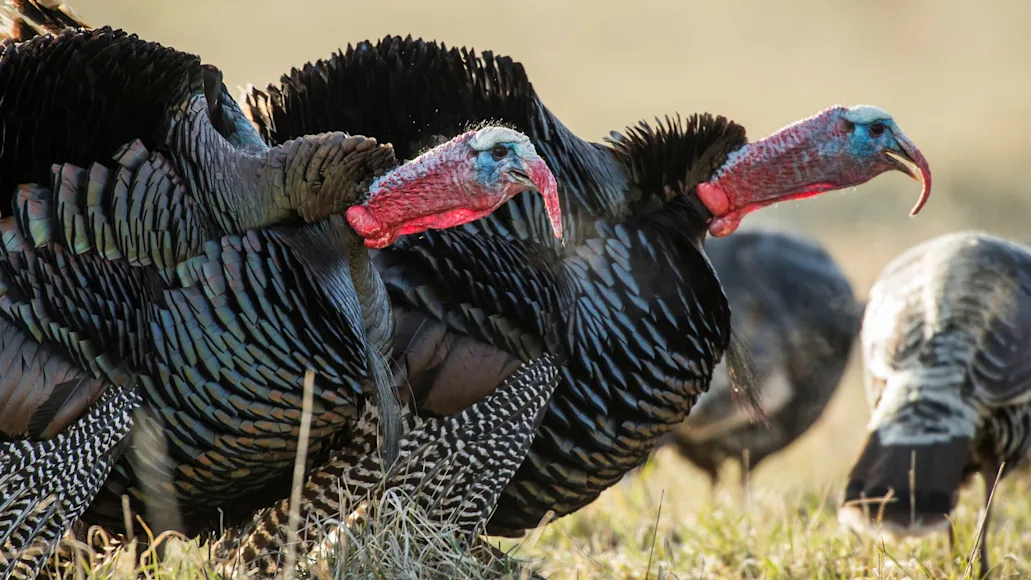With the exception of some northeastern states, turkey season is either in full swing or about to be all across the country. Obviously, weather can play a role in where birds are in their breeding activity. For example, Scott Haugen, our expert for today, feels that cold weather and snow can kick back peak breeding for a week or two in his area. But given a normal spring, he’s confident that toms will be actively seeking and breeding hens on the April 15th opener in his home state of Oregon, as well as across a wide swath of the country with mid-April openers.
No matter where you are trying to tag a tom, Haugen’s advice on the importance of scouting and setting up correctly will serve you well—even in the Deep South where cold fronts are a relative term, and even in the northeastern where you may have to wait a couple week yet before you can put his advice to work.
**Related: The Best Days of the Strut: 7 Must-Hunt Dates for the 2024 Turkey Season
**
Learn how to subscribe to the new Field & Stream magazine here!
The Pro: Scott Haugen, Oregon

Scott Haugen with a gobbler he took in the deep woods of Oregon’s Cascade Mountains. Scott Haugen
This spring will be Scott Haugen’s 48th seasaon in the turkey woods. While his writing and television gigs have him traveling the continent to hunt, his favorite haunts are the western foothills of Oregon’s Cascade Mountains. His home-turf hunt never grows old, he says, noting that the combination of wind and ice storms that continually change the habitat and the growing presence of predators (including mountain lions, bobcats, coyotes, and fox) have combined to influence turkey behavior in ways he never imagined when he started—all making for a great challenge.
Like any true expert, Haugen has adapted to the changing conditions and continues to be successful on the Rio Grande gobblers he hunts near home. Many of Haugen’s tactics can be found in his popular book Hunting Western Turkeys, which is available on his website
.
The Strut Stage: Early Breeding
The April 15 opener in Haugen’s neck of the woods typically coincides with the early-breeding phase—and where he hunts, it also means that the birds are on the move. “Most of the turkeys spend the winter at lower elevations, but as spring kicks in, they start moving up into the foothills where I hunt,” Haugen says. “Some of these areas are 12 to 15 miles from their wintering grounds, so having an idea where turkeys are going before they get there is the key to success as the breeding starts up in these areas. Sometimes the birds make a move in response to the first warmup, then a cold front or bad weather kicks in and things get delayed a week or two. But I’ve been scouting and monitoring flocks since late winter, so I generally know where to expect to find toms regardless of what’s happening with weather.” Whether your turkeys make a big move in early spring or small moves from woodlot to woodlots as flocks break up, it pays to keep tabs on them during this early-breeding period.
Expert Tactic for April 15: Tag a Mid-Morning Tom with Deer Tactics

A pair of mature gobblers Haugen took using a preening hen decoy. Scott Haugen
Haugen keeps track of the big-traveling Rios in his area by scouting for them much like he would deer and elk. “I start putting out trail cameras
in January to keep track of bachelor groups of toms,” he says. “Then, as winter turns to spring, I keep moving them up the mountain to identify the favorite places of toms and hens. I don’t use cellular cams here because they simply don’t work with the poor signal. Plus, getting out to physically check cameras allows me to scout for actual bird sign, such as tracks, droppings, and feathers. I’ve found that following trails established by deer and elk is the best method for doing this. Not only do the turkeys use these same trails, but the paths connect openings that turkeys really love to use after fly down. On a typical day’s hunt, I’ll choose one particular ridge that may be a mile wide and 3 miles long, and I’ll spend most of the day moving between these openings and trying to yelp up a gobbler.”

Trail-cam shots like this one can help you keep tabs on where gobblers want to be during the early-breeding phase. Primos
While his mountain Rios often gobble well on the limb, Haugen says they can be less talkative on the ground. “We have so many predators here—cougar, coyotes, bobcats–that turkeys are really hesitant to talk much as they travel. This is where all the scouting comes into play; I want to put myself where turkeys already want to go, and I find the best action by working these openings where I’ve had my trail cams, from 9 a.m. on. I also think turkey decoys
are important, they give a tom confidence that the hen he’s been hearing is actually real. I’ve had great success with the DSD Preening Hen
, which real hens seem to avoid but lures in gobblers for the close shot I’m seeking. I hunt with a .410 and shoot most of my birds at bow ranges.”
Haugen’s advice for you in your hunting area is simple: Scout, scout, and scout, including with trail cameras, to find out where birds want to be after flydown and through midmorning. That way it doesn’t matter so much if they don’t gobble after flydown, because you can still be confident knowing you’re in the right spot to intercept a tom.






